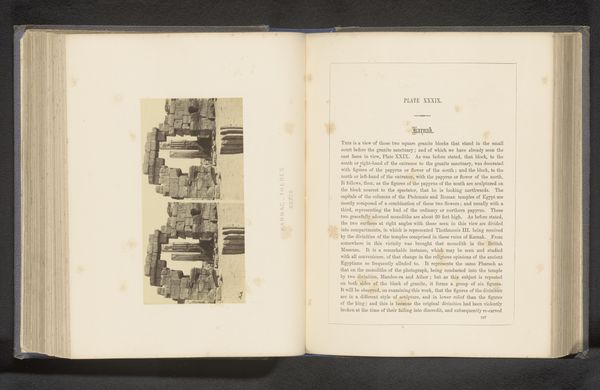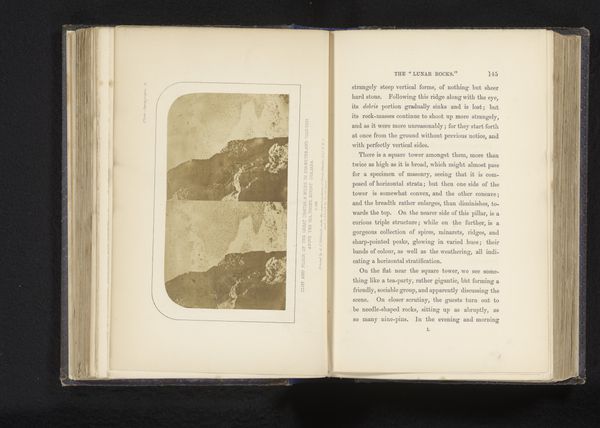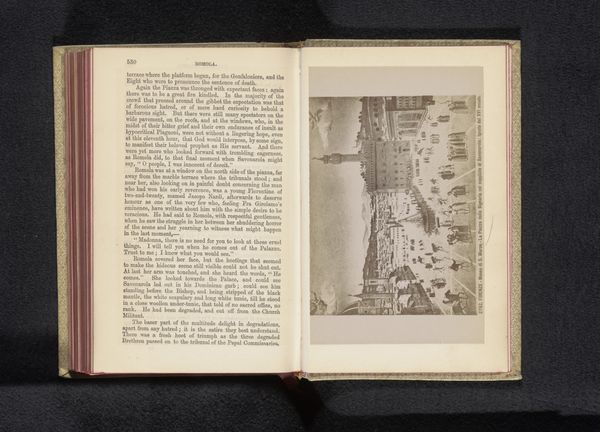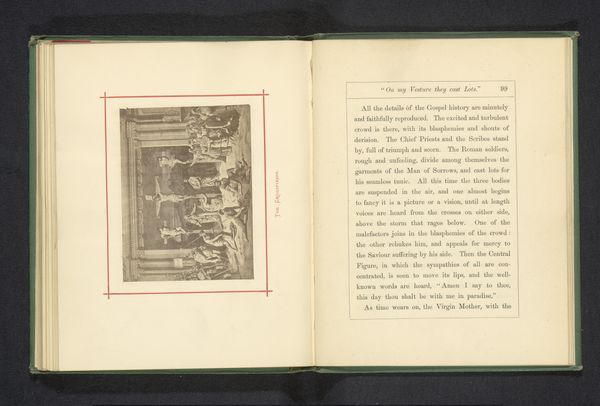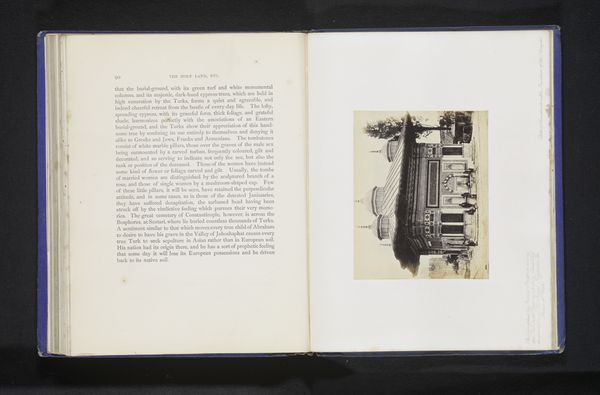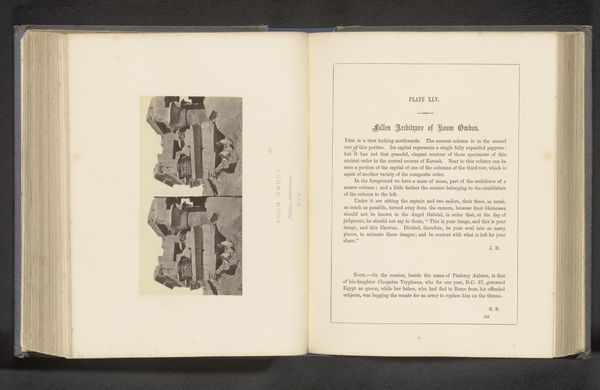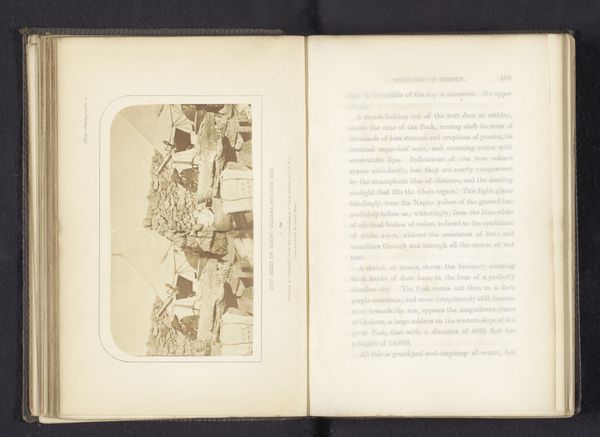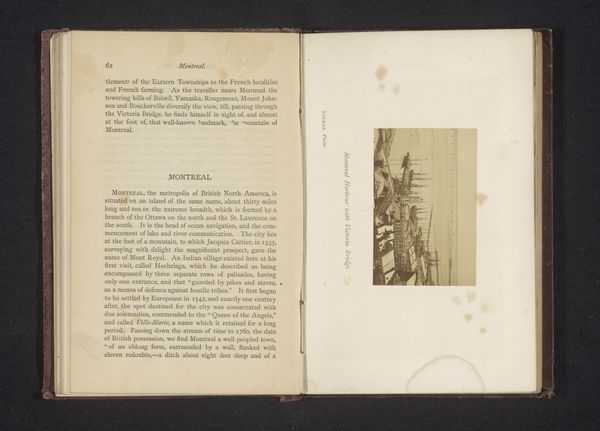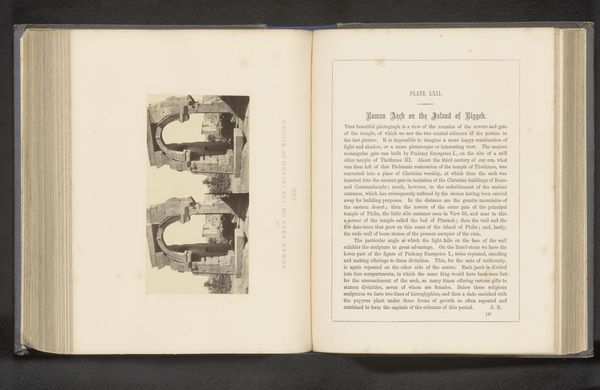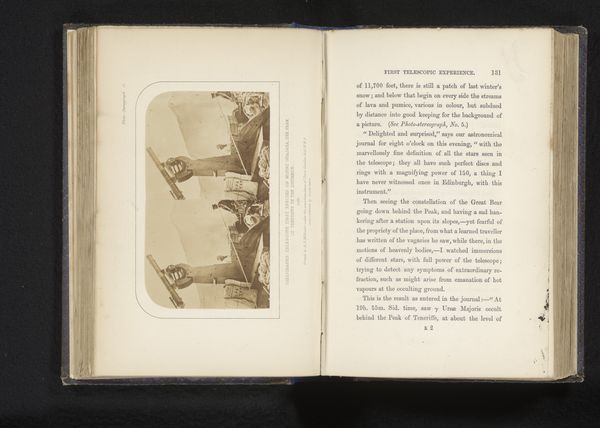
Vulkanische kegel te La Orotava, met drie mannen op de voorgrond 1856 - 1858
0:00
0:00
print, photography, gelatin-silver-print
#
16_19th-century
# print
#
landscape
#
photography
#
gelatin-silver-print
Dimensions: height 68 mm, width 119 mm
Copyright: Rijks Museum: Open Domain
Curator: This gelatin-silver print from between 1856 and 1858 is titled "Vulkanische kegel te La Orotava, met drie mannen op de voorgrond," or "Volcanic cone at La Orotava, with three men in the foreground," made by Charles Piazzi Smyth. Editor: Wow, it has this grainy, otherworldly feel, doesn't it? The stark contrast makes the volcano loom in the distance like some sleeping giant, and those tiny figures below really emphasize its colossal scale. It's strangely peaceful yet imposing, I can almost feel the volcanic power lurking underneath. Curator: What’s interesting about this is Smyth's dual identity. He was an astronomer and also an early pioneer of photography. This work is really an intersection of both. It blends scientific observation with an artistic eye, a documentation of the landscape married to a distinct aesthetic. The men aren't just incidental; their presence becomes a metric, almost a scientific one. Editor: Exactly! They become points of reference, and they also add this layer of human vulnerability against nature’s vastness. Looking at them huddling together at the bottom just triggers that feeling of sublime terror—and maybe awe, that comes with being small against all these huge geological events! Curator: This ties into the broader Victorian obsession with exploring and documenting the world through new technologies, it speaks to humanity's perceived dominion over nature, attempting to capture and contain these grand landscapes within the frame of an image. And as the viewer now, we also continue this capturing, in effect. Editor: And maybe a yearning for some understanding, like these prints almost freeze-frame something wild for study, which is still so deeply resonant. Curator: Indeed, these landscapes allow the 19th-century audiences—and present-day viewers like us—to experience a seemingly unconquerable phenomenon vicariously, safe from the dangers and uncertainties inherent to scientific or geographical exploits. Editor: Well, I’m suddenly grateful for living in an age where I can safely experience volcanoes on a guided tour. It gives me something to ponder, all that power tamed by technology—almost. Curator: An insightful close for an enduring study of observation. Thank you for your insights.
Comments
No comments
Be the first to comment and join the conversation on the ultimate creative platform.

